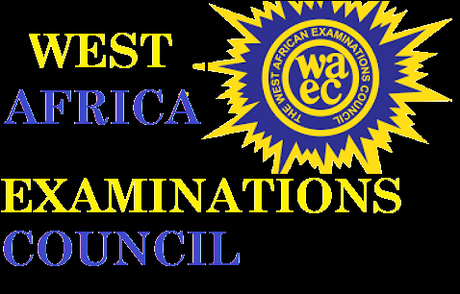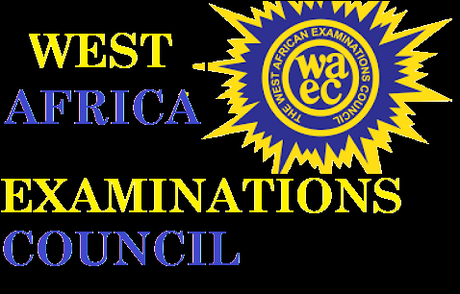
WAEC Syllabus for Leather Goods Manufacturing. WAEC Syllabus for Leather Goods Manufacturing is available for all candidates who want to participate in the examination. The West African examination council (WAEC) has officially introduced a syllabus that will guide all the WAEC candidates who wish to write the WAEC examination this year. For a very successful WAEC Leather Goods Manufacturing examination for this year, you need to check out the available areas of concentration. It has been divided into sections with chapters, followed by the topics to be covered in preparation for the exams. In the WAEC Syllabus for Leather Goods Manufacturing, you will also see the format of how the WAEC Leather Goods Manufacturing questions will be presented. Jamb form
There are 2 sections to answer questions from. Paper 1 is Objective and paper 2 contains essay questions while paper 3 is practical paper. Where paper one (1) carries 60 minutes for 40 marks; paper two (2) carries 60 marks for 2 hours and paper three (3) 4 hours, has 3 (three) alternatives. Waec Result

This WAEC syllabus is for both the O'level WAEC and General Certificate Examination (GCE) candidates. Final year students in the senior secondary school level and external candidates are eligible to make use of this syllabus and prepare ahead of the examination. WAEC Syllabus for Leather Goods Manufacturing
See the full detailed information concerning the WAEC Leather Goods Manufacturing Syllabus below.
The Leatherwork course focuses on the techniques, aesthetics and business of leather goods manufacturing. Candidates are also expected to demonstrate their knowledge in the use and maintenance of the materials, tools and equipment involved. Leather Goodsrequirecandidates to demonstrate their knowledge and skill on the production of footwear, bags and other leather goods. Npower Recruitment
There will be three Papers: Papers 1, 2 and 3 all of which must be taken. Papers 1 and 2 will be taken at one sitting.
Paper 1: Will consist of forty multiple choice objective questions to be answered within 60 minutes for 40 marks.
Paper 2: Will consist of six essay-type questions, out of which candidates will be
required to answer four within 2 hours for 60 marks.
Paper 3: This practical paper shall be called Leather Craft and it is a compulsory paper that seeks to evaluate the practical ability of candidates in designing and production of functional leather goods, based on inspiration from the environment and culture.
The paper, which will last for 4 hours, has 3 (three) alternatives (A, B and C) and candidates are to attempt one only. The question paper shall be given to candidates two weeks before the actual date of examination. This is to enable candidates make necessary preparation.However, the project shall be executed in the examination hall, under the supervision of an Examiner to be engaged by the West African Examinations Council (WAEC). Candidates are expected to present preliminary sketches and notes enunciating the rationale behind design and production.It should be noted that Schools are expected to provide the necessary materials, tools and equipment for this Paper.
The examination will cover all aspects of the teaching syllabus, both the theory and the practical sessions, and shall include the following:
(a) Meaning of Leather craft.
(b) Importance of Leather craft.
(c) Preparation of Leather.
(d) Types of Leather goods or products.
(a) Components of footwear.
(b) Differences between men's and ladies' shoes.
(c) Materials, tools and equipment for footwear design and production.
(d) Pattern cutting.
(e) Clicking, Skiving and Folding. Dollar to Naira Rate
(a) Types of leather goods.
(b) Functions of leather goods.
(c) Influence of social habits, fashion and price on the design and production of leather goods.
(d) Design Illustration and Pattern making.
(a) Materials. e.g. leather, fabric, rubber, adhesives, etc.
(b) Tools. e.g. knives and shears, hammer, mallets, punches, awl, beveller, skivers, etc.
(c) Equipment. e.g. Sewing machine, sole tr i mmer, leather cutter, splitter, sanding, spraying/polishing machine, etc.
(d) Description, use and care of tools and equipment.
(e) Safety measures in leather goods production
- Types and functions of Sewing machines.
- Operation of sewing machines.
- Stitch formation / stitching.
- Methods of stitching.
(a) Techniques of Decorating
(i) stamping
(ii) stitching
(iii) carving
(iv) spraying
(v) embroidery
(vi) appliqué
(vii) dyeing, etc.
(b) Finishes and Finishing
(i) Meaning of finishing.
(ii) Importance of finishes and finishing.
(iii) Types of finishes.
- Location
- Funding
- Purchasing and supplies of materials
- Pricing / negotiation
- Merchandising
- Advertising/publicity
- Marketing and selling
- Fund management.
LIST OF FACILITIES AND MAJOR EQUIPMENT/MATERIALS REQUIRED:
FOOTWEAR MANUFACTURE AND REPAIRS- Flatbed sewing machine
- Post bed sewing machine
- Zigzag machine
- Perforating machine
- Stamping machine
- Spraying machine (with cylinder)
- Embossing machine
- Sole roughing or grinding machine. Pounds to Naira
- Post bed machine
- Flat bed machine
- Guides
- Gadgets
- Skiving machine
- Splitting machine
- Scissors
- Zigzag scissors
- Gums and adhesives Jamb Result
- Tape rules
- Eyelet pliers
- Pattern knives
- Pattern knives
- Cutting knives
- Awls
- Hammers
- Nail removers
- Sharpening stone
- Lasting pincers
- Clicking boards
- Eyelet pliers
- Tape rules
- Adhesives
- Set of adult plastic Last (from size 40 - 45)
- Set of ladies plastic Last (from size 34 - 43)
- Set of children plastic Last (from size 22 - 39)
- Hand punching pliers
- Iron Last
- Cutting board
- Screw drivers
- Pliers
- Expansion Last
- Scissors
- Zigzag Scissors
